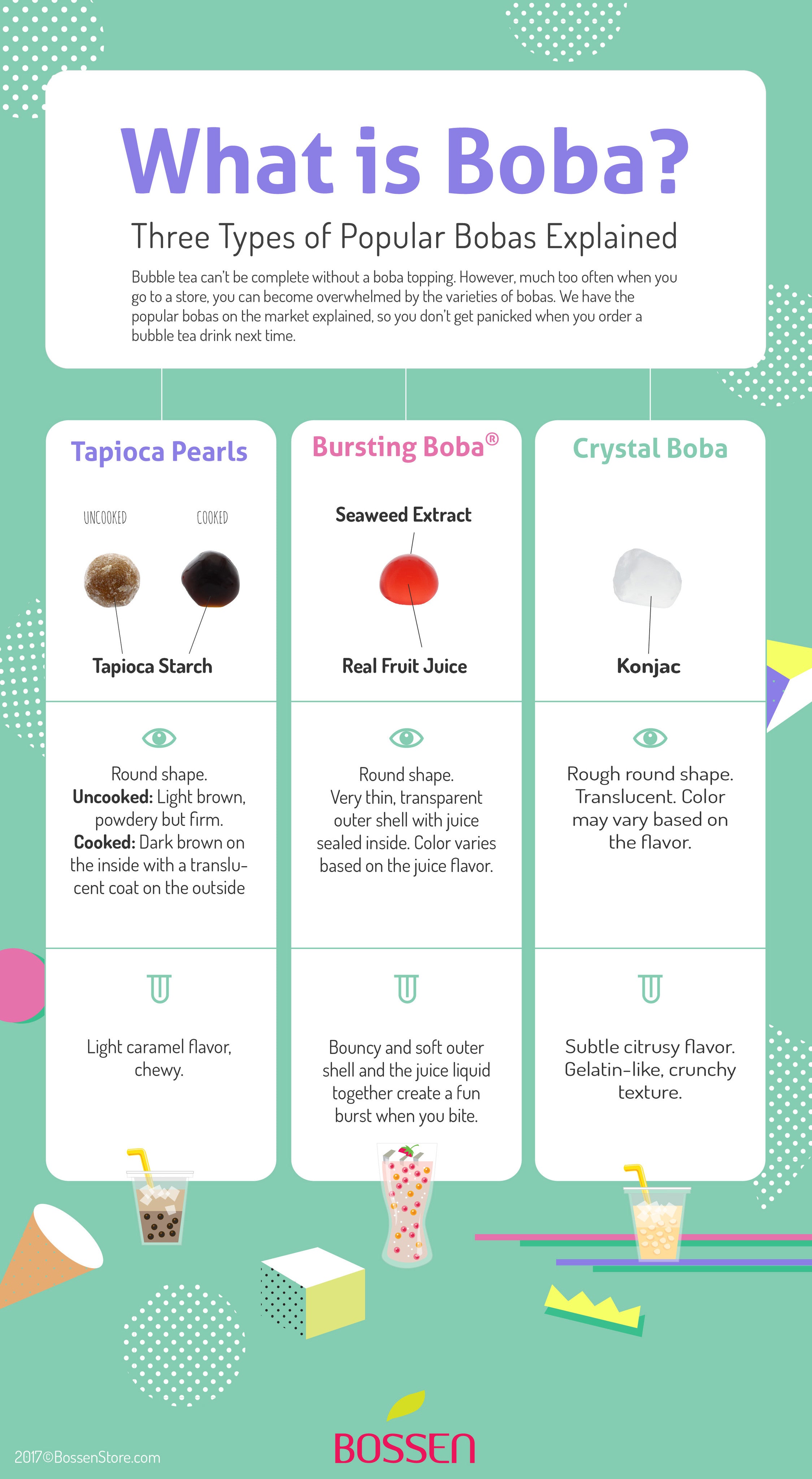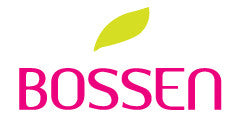What Is Boba
What is Boba?
After visiting several boba tea shops and learning more about the ins and outs of bubble tea as an overall beverage, you find yourself asking a few more questions about boba as a topping. You’re probably wondering, what exactly is the boba in bubble tea, and is there more than one particular type? Whether a bubble tea drink is fruity, frothy, malted or milky, the common factor that makes it a unique beverage is the layer of mysterious round toppings at the bottom of the cup. Boba is the essence of bubble tea, and it is more than just an edible and chewy tapioca ball. Similar to the actual bubble tea drink, boba as an ingredient also comes in a variety of colors, sizes, flavors and textures. In this article, we will walk you through various types of popular pearls ranging from the classic styles to the latest, more renovated forms.
Tapioca Pearls, The Dessert With Several Names
Although these fun-looking tapioca balls are more commonly referred to as “boba” or “bubbles”, this delicious dessert topping has a number of other nicknames as well. Different monikers for boba pearls include “zhen zhu”, momi, QQ, BB and many more. Even though there are several theories about how boba received its name, the more popular assumption is that the tapioca balls sitting at the bottom of the drink resemble bubbles. Another possibility could be that when flavor is added, and the drink is shaken up, it forms bubbles. On a cruder, more comical note, the word “boba” is also a Taiwanese slang term for “big-breasted female”, and as bubble tea started becoming more well-known in the U.S., the name “boba” stayed around.
What Is Boba Made Of?
When you think of freshly made boba, you’re most likely imagining the soft and chewy black tapioca balls with a glossed sugary finish. What you may not know is that boba goes through several forms before taking on this final result.
The bobas in bubble tea come from a nutty-flavored underground stem called the cassava root or Manihot Esculenta. Known in other parts of the world as Yuca, this woody shrub plays a major role in the boba industry as well as the starch business. Afterall, boba in its raw form is extracted starch from cassava roots. Not only is boba gluten-free, it is also a thickening agent in its flour form. Tapioca pearls are extremely versatile. They can be made to vary in color and texture depending on the ingredients it’s made with (water, sugar and seasoning).
Variations of Traditional Boba
While original tapioca pearls should look white or crystal, the more popular types are brown with caramel or brown sugar flavor added. When you are making boba, that’s when you will notice the chewy texture with a subtle sweet flavor. The pearls usually sit in fructose sugar before use, which not only adds to the flavor, it also creates that signature sweet and glossy outer coat.
Since there are several different size grades for tapioca pearls, cooking times and ingredient measurements may vary. These sizes are based on measurements in millimeters, and they are based on the diameter of the pearl before it’s made. The most commonly used boba size is 2.3 (8.5mm), but with the rising popularity of “mini boba”, many tea shop businesses have begun using 1.0 (5mm) sized boba as well.
If you thought boba only came in different sizes, think again. These popular bubbles also come in an assortment of forms and textures. Some tapioca pearls even contain fillings. One of the more well-known variations of pearls is the red ruby tapioca. Better known as “rubies”, this dessert topping is made from water chestnuts and tapioca flour. Rubies are used in the popular Thai beverage, Tub Tim Grob, which combines red rubies with coconut milk, and it’s enjoyed during hot weather. The red ruby tapioca is also used with the traditional Vietnamese dessert called “Chè”, which comes in the form of either a sweet soup, pudding or beverage.
Specialty Bursting Boba®
This particular type of boba is also known as popping boba. It has a soft outer membrane, and it’s filled with juice. Although this fun topping has been gaining momentum in the bubble tea industry, this was already starting to become popular in the 2000s when froyo spots such as Yogurtland and Red Mango started using it. Many modern Japanese restaurants use them as well since the topping resembles fish roe. These fun bobas are made using a molecular gastronomy technique called Reverse Spherification. This method involves submerging a liquid with calcium content (often flavored) into a bath of sodium alginate, which causes the calcium to turn into spheres. Bursting Boba® is not only delicious and fun, it is also low-calorie, ready to serve, filled with real juice.
Specialty Crystal Boba
This is a unique type of boba that is also referred to as crystal tapioca or white pearls. Crystal Boba is made with konjac, which is a plant that grows in the tropical regions of Eastern Asia. This kind of specialty boba is not only translucent and beautiful, it also has a chewy gelatin-like texture. They resemble traditional tapioca pearls, and complement bubble tea, frozen yogurt, shaved ice and other icy beverages. Crystal boba has become popular in recent years due to its easy-to-prepare features, its distinctive appearance, and interesting subtle flavors.


